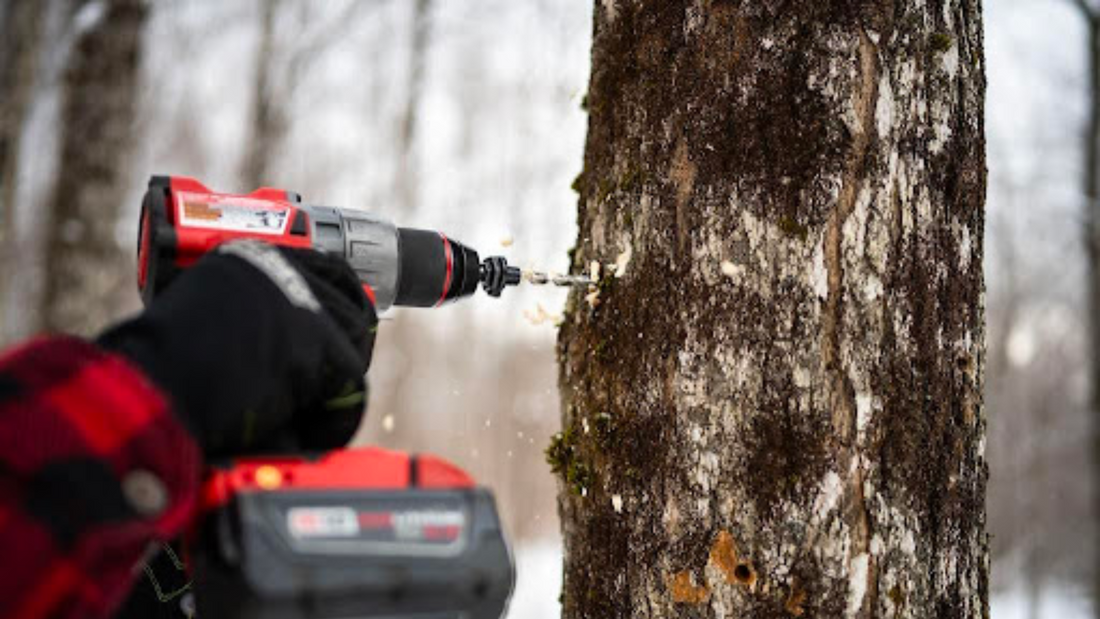
How Maple Sap Water is Sustainably Harvested
Share
Sustainable maple sap water harvesting is important to ensure that the natural resources of the forest are not depleted, and that the maple trees can continue to produce sap for future generations. Maple harvesting has been passed down through our co-founder, Dan’s, family for generations, and we are committed to sustainable harvesting and maintaining a healthy forest ecosystem for generations to come.

Here is how we sustainably harvest our sap water:
- Tap trees carefully: The tapping process involves drilling a hole into the tree to collect the sap. It is important to tap the tree in the right spot and to use the right size spout to minimize damage to the tree. Trees that are tapped properly will be able to heal themselves and produce sap year after year
- Use appropriate equipment and materials: Maple sap should be collected using food-grade equipment that is properly cleaned and sanitized between uses. As an organic operation, we follow the USDA’s strict organic guidelines to only use equipment and processing methods that are free from synthetic chemicals and contaminants, and organic-approved packaging materials.
- Rotate tapping locations: To prevent over-tapping and damage to the trees, we rotate tapping locations each year. This allows the tree to heal and recover between tapping seasons.
- Manage the forest ecosystem: A healthy forest ecosystem is essential for sustainable maple sap water harvesting. We manage our forest carefully by promoting biodiversity and protecting wildlife habitat (including catching the occasional bear seeking some of our sweet sap). Our forests are never treated with pesticides or soil fertilizers. As Vermont farmers, we benefit from an environment and ecosystem that promotes the growth and health of maple trees naturally. We partner with the Northeast Organic Farming Association of Vermont to ensure our maple production is operated with integrity and transparency.

Sustainable maple sap water harvesting is serious business and involves careful tapping, appropriate equipment use, rotation of tapping locations, and careful forest management. By following these practices, maple producers can ensure the longevity and health of the forest ecosystem, and maintain a healthy and sustainable source of maple sap for years to come.
